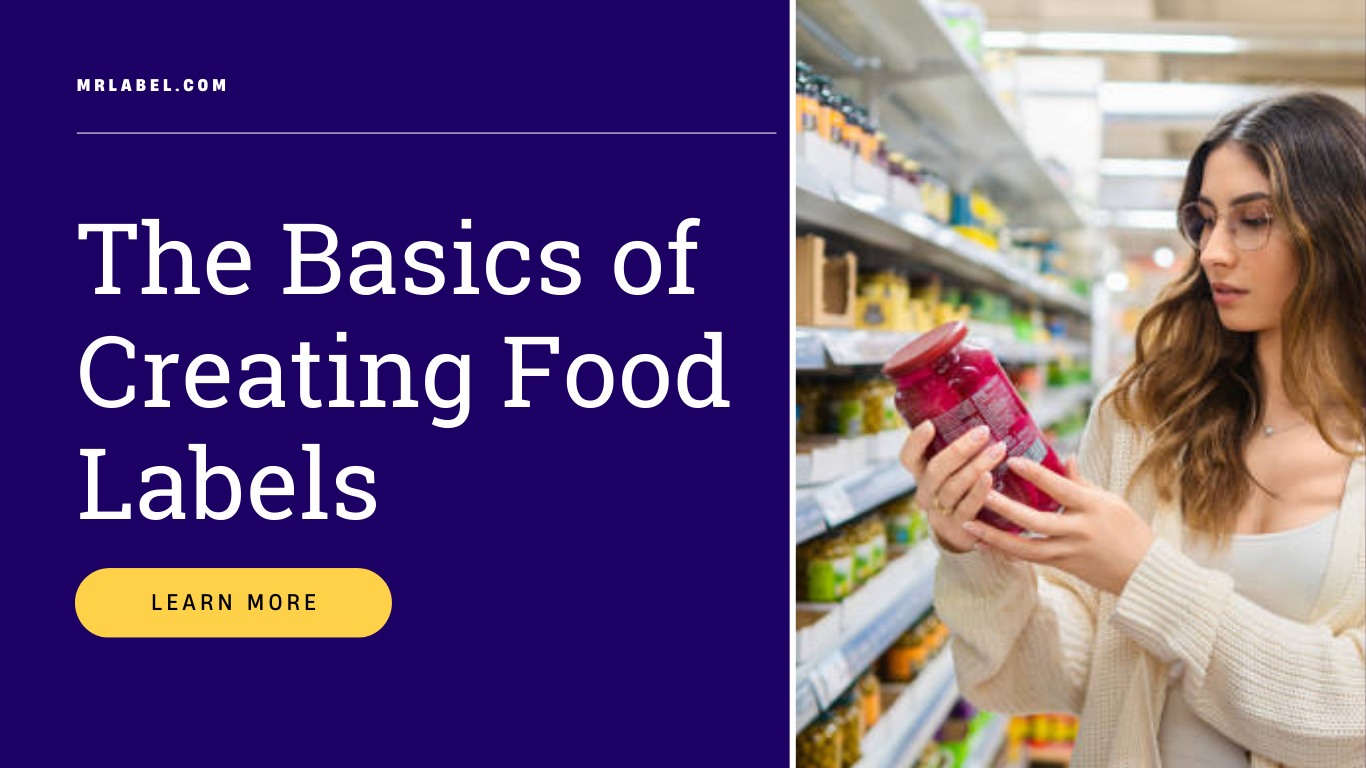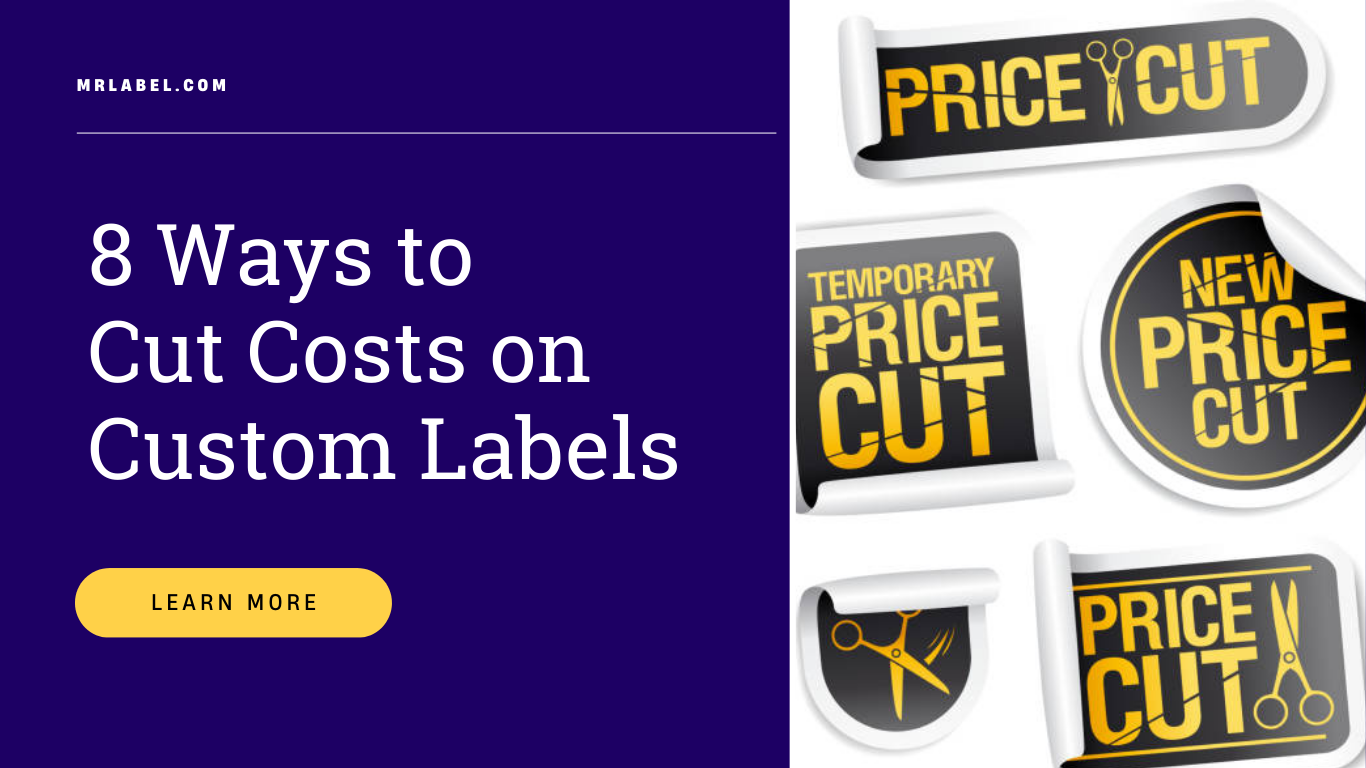You’ve put countless hours into manufacturing the best possible product. The ingredients have been mastered. Your business has proudly created a delicious item guaranteed to please the taste buds of all your consumers and stock the shelves of all your retailers. These are great milestones for your company!
However, all this equates to nothing without exceptional custom food labels that follow FDA requirements, inform your consumer, and grab the attention of distracted (and hungry) shoppers. Do your food labels have what it takes to make your products leap off the retail shelves and into hungry mouths?
Creating quality label design can seem like a daunting task. Fortunately, the M&R Label team is here to equip you with the tips, tricks, and resources to make the process much easier! Check out our comprehensive guide to the basics of food labeling. We’ll discuss the different aspects of a food label, the label guidelines for compliance with federal regulations, and send you off with a few expert label design tips.
Let’s Get Started with the Basics of Creating Food Labels…
The Sections of a Food Label
There is a lot of information that needs to be displayed on printed food labels. If you sell your food to retailers, they will have specific requirements and information standards you’ll have to meet. Even if you sell products directly to individual consumers, you need to educate them about your ingredients, warn them of possible allergens, and display key information.
Because of all these factors, it’s important that you make the best use of space on your product! It’s easier to be more efficient with space on a food label when you understand the different sections of a food label and their functions. Let’s dive in…
- Principal Display Panel (PDP): This is the area most likely to be seen by a buyer at the time of purchase. For a rectangular container like a cereal box, the PDP area is the product of the height times the width. For a cylindrical container like a soda can, the PDP area is 40 percent of the product of the height times the circumference.
- Information Panel: The information panel is the panel or space immediately to the right of the PDP.
- Nutrition Facts Panel: In general, place the Nutrition Facts Panel on the PDP or the Information Panel, near the ingredient statement.
- Barcode: There is no established government rule that requires your food to have a barcode, but most retailers will require them. The barcode should be placed where it does not impede on any of the required information.
- Best Before, Expiration, and Sell By Dates:
- Date regulations can vary from state to state. Check the specific regulations in your state.
- When it comes to date placement, make sure it does not interfere with the required information. It should have an explanatory phrase (“best before”, ”sell by”, etc) followed by the month, day and year.
Meet Food Industry Standards
The Food and Drug Administration (FDA) has clear guidelines about what needs to be included on a food label. We’ve simplified those rules for you below. Following the rules set forth by the FDA not only helps your business avoid legal consequences, but it also builds trust between and the consumer, signaling that the product they are buying is safe to ingest.
The following details are requirements, not suggestions:
- Statement of identity, or name of the food: The statement of identity is the legal name of the food.
- Net quantity of contents: Net quantity is the amount of food in the package, often measured in weight, fluid measures, or the number of items.
- Nutrition Facts must require the following information
- Serving size
- Household measure/common household unit
- Servings per container
- Mandatory nutrients (total calories, total fat, saturated fat, trans fat, cholesterol, sodium, total carbohydrate, dietary fiber, total sugars, added sugars, protein, vitamin D, calcium, iron, potassium)
- Ingredient Statement: You must display the ingredient statement on the same panel as the manufacturer information. The ingredients are listed in descending order of weight in a type at least 1/16” tall and easy to read.
- Allergen Statement: You must declare, when present, any of the “big eight” allergens (milk, egg, fish, crustacean shellfish, tree nuts, wheat, peanuts, soybeans), either in parentheses after the name of the ingredient in the Ingredient Statement or in a statement adjacent to the Ingredient Statement.
- Identification: Name and address of the manufacturer, packer or distributor.
We realize this is a lot of information to keep track of…and there’s a lot at stake if something is missing or incorrect. That’s why working with a professional label printer that is knowledgeable in your industry is a must – we know we are!

Custom Label Design Tips
Now that we’ve discussed what information needs to be displayed on a custom food label, let’s talk about creating that exceptional label design that draws the attention of your customers. If your products don’t stand out on the shelves, they won’t sell. What can your business do to make your products irresistible to both consumers and retailers?
- Give Food Labels Some Shelf Appeal
- Use vibrant colors and consistent design to make your product look appetizing.
- Showcase elements of your food that make it special. For example if you use organic ingredients, display that proudly on the PDP. If your product is gluten free or soy free, etc. Make that information stand out so that your target audience knows what they’re getting.
- Meet Retailer Packaging Guidelines
- SKU management is critical as retailers often have multiple versions of the same product
- Abide by all FDA regulations and use the expiration date guidelines set forth by your state.
- Use Functional Custom Food Labels
- Food is stored in many different environments. If you sell frozen foods, you need custom labels that can withstand those temperatures. Your labels need to be water-proof and oil-resistant in order to withstand the temperatures. The best way to achieve this is with thermal and direct thermal label printing.
- Ensure Steady Label Inventory
- Partner with M&R Label’s inventory management services to ensure your food labels are delivered in a timely manner and that you never run out of supply! Need shipping labels? We can supply those too!
Partnering with M&R Label for Your Custom Food Label Needs
In today’s highly competitive marketplace, branding matters more than ever and your Custom Food Label design and printing must stand out! Product labels not only need to be aesthetically pleasing to catch the wandering eye of consumers, but they also need to be functional. Functional custom food labels are waterproof and oil-resistant to withstand all types of environmental conditions and need to be FDA compliant with the industry’s label regulations. Popular printing needs for the Food Industry include: labels, stickers, shrink sleeves, flexible packets, tamper-evident seals, and more.
Not sure where to start or who to trust with your labels? You’ve come to the right place! With over 30 years of label expertise, M&R Label’s high-quality label design and superior printing capabilities are just what your business needs. Customers rely on us to print unique, effective labels that catch the attention of busy shoppers and keep their products flying off the shelves! We can print any size, shape, or color graphics based on your needs.
Do you require custom product labels that will hold up in freezer temperatures or extreme heat? It is important to use the right materials to stand up to these factors without fading, bleeding, or smudging. Interested in adding a QR code? Whatever you’re looking for, you can be sure that M&R Label’s experienced team of designers will work with you to identify the best label solution for your products!



